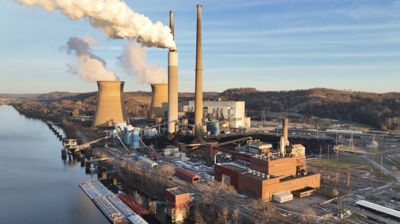The Big Tech boom is driving advancement through artificial intelligence, but it is also putting increasing demands on America’s electric grid. The result could be a “strange bedfellows” alliance between fossil fuel and green energy.
The issue is simple and obvious: Environmental advocates want to move America’s energy use from gasoline and heating oil to electricity to reduce carbon emissions. The more successful they are, the more electricity Americans need.
On top of that is the surge in electricity consumption by the data centers at the heart of the new AI economy.
A recent report from the Department of Energy estimates that energy usage for data centers tripled over the last decade, primarily due to increased server capacity for AI. That energy usage is expected to again triple by 2028. Data centers are critical to AI systems and domestic manufacturing, among other industries.
Now, energy analysts are raising concerns that the power draw required by data centers — especially the large facilities run by Facebook, Amazon, Google and other tech giants — will outpace U.S. electricity generation.
For years, advocates for coal and natural gas have argued that a reliable baseload of electricity is vital to the nation’s grid. Green energy proponents have pushed back, insisting that the future is with wind and solar power.
However, with data centers’ power consumption growing from 58 terawatt-hours in 2014 to an estimated 580 TWh by 2028 — 12% of all electricity generated — some experts on America’s energy grid say the “either/or” moment has passed.
“AI data centers are multiplying across the U.S. and sucking up huge amounts of power,” Bloomberg reported in December. “New evidence shows they may also be distorting the normal flow of electricity for millions of Americans. While many facilities are popping up near major U.S. cities and adding stress to already fragile grid, this trend holds true in rural areas as well.”
The solution: More electricity. Unfortunately, policies backed by some green energy advocates have restricted the ability to generate power using fossil fuels. At the same time, increased wind and solar production have failed to keep up with demand.
Trisha Curtis, the president and CEO of PetroNerds, says it’s time to stop fighting and start producing. “In the U.S., we need more energy, so it’s really about building more power generation capacity,” she said. “Then you can argue politically about what you’re going to fuel it with. Coal and natural gas are energy-dense, reliable baseload power sources that are not intermittent,” she said.
Curtis said that the United States has “more than enough” natural gas, noting the challenge there is in building the infrastructure to move the gas to power plants.
Coal, too, has to be part of the domestic energy strategy.
Stories you might like
“Stop decommissioning coal,” she said. “You dig it out of the ground, put it next to a power plant, and use it when you need it. Wind and solar aren’t going to cut it — there’s not a lot of power density.”
Last month, 21 congressional Republicans signed a letter urging their GOP colleagues to maintain green energy tax incentives.
“Countless American companies are utilizing sector-wide energy tax credits — many of which have enjoyed broad support in Congress — to make major investments in domestic energy production and infrastructure for traditional and renewable energy sources alike,” they wrote.
In 2024, wind and solar power generation surpassed coal production for the first time, according to a report by Ember, an energy think tank.
The Energy Information Agency reports natural gas consumption set new winter and summer monthly records last year — more proof that natural gas will remain a critical part of the nation’s energy economy.
In 2024, more than any other source, natural gas accounted for 43% of U.S. utility-scale electricity generation.
“Pennsylvania is the second largest natural gas producing state in the nation, and the largest exporter of electricity,” said Patrick Henderson, vice president of government affairs and communications for the Marcellus Shale Coalition.
“Pennsylvania literally helps keep the lights on for our neighboring states. Detrimental state policies, however, hinder our ability to maximize use of this clean, abundant and affordable resource, which is necessary to meet growing electricity demand at a time of historic power plant retirements.”
As the demand for power from AI data centers climbs, America’s grid operators are addressing the challenges.
For example, Indiana Michigan Power, part of American Electric Power, recently finalized a large load tariff settlement with Amazon Web Services, Microsoft, Google and the Data Center Coalition that requires the companies to make significant, long-term financial commitments to ensure grid reliability and availability of electricity for commercial and residential ratepayers.
Meanwhile, some states are attempting to attract data centers — and the jobs and investments they bring. Indiana, for example, is pushing a robust energy plan that includes the development of nuclear power plants — the cleanest energy source available.



